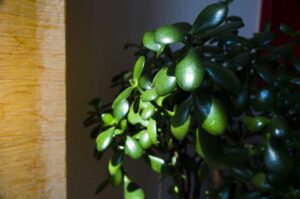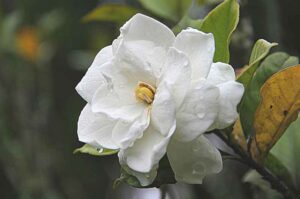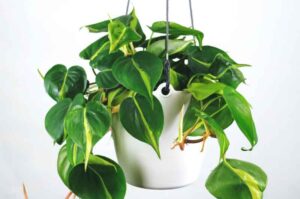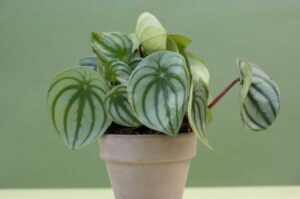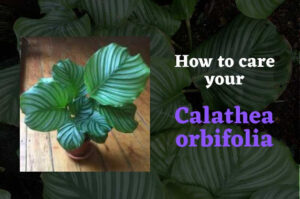Aglaonema pictum tricolor plant care guide
Aglaonema pictum tricolor plant is well known among the plant enthusiasts for its interesting camouflaged foliage, low maintenance requirement, and eye-pleasing appearance. Its oval multicolored leaves make it an interesting candidate to be in your indoor plant collection.
Aglaonema pictum tricolor is originated from the tropical and subtropical regions of Asia and New Guinea. It is mostly found in regions of Malaysia, New Guinea, and Sumatra. But these days this plant is found in many countries because of its high demand among the plant lovers.
Aglaonema is a genus belonging to the Araceae family, having more than 50 species. Aglaonema pictum tricolor is one of them. This plant is the variegated form of commonly found Aglaonema pictum, having more work with color.
The leaves clearly show three different colors, rather three different shades of green that are deep green, light green, and white as the name tricolor suggest. Therefore, this plant is also known as a camouflaged plant.
The large oval camouflaged leaves, low needs of maintenance and the ability to grow finely in the indoor condition makes the plant a perfect selection for the plant enthusiast to choose for their indoor plant collection.
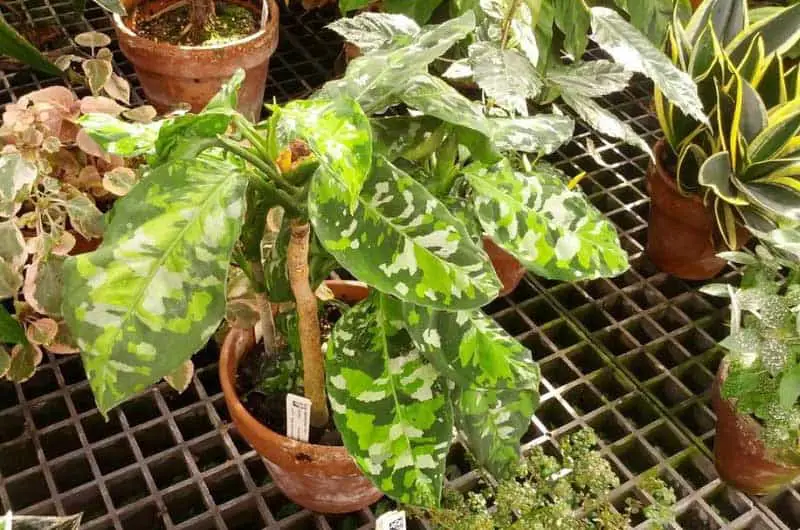
Some details about Aglaonema pictum tricolor
- Botanical name- Aglaonema pictum tricolor
- Common name- Chinese Evergreen Tricolor, The camouflaged plant.
- Family- Araceae
- Origin- Tropical and subtropical regions of Asia, South China, and New Guinea
- Special features- Multicolored leaves appear camouflaged. The blissful appearance of the plant makes it a joy to watch.
- Light requirement- Medium to bright diffused sunlight is ideal for the plant
- Soil requirement- This plant will do well under well-drained fertile soil.
- Temperature- The best temperature range for these plants is between 65 to 750 Fahrenheit or 18 to 250 Celsius.
- Humidity- Plant does well under a humid condition.
- Water requirement- The plant needs regular watering. The potting soil should be moist but should not be waterlogged.
- Fertilizer requirement- Balanced organic fertilizer will feed the plant enough nutrients.
- Repotting- Repotting is needed every 3-4 years.
- Propagation- Propagation by stem cutting or division.
- Pruning- No heavy pruning is required. Only the old dead leaves are to be pruned out.
- Toxic- Yes this plant is toxic and should be kept away from pets and kids.
Complete care guide about Aglaonema pictum tricolor the camouflaged plant
Here is a complete guide to making you understand about those aspects which you should take care of if you are seriously planning to grow an Aglaonema pictum tricolor and increase the aesthetic appearance of your living space.
1. Light requirement-
This plant will do perfectly well under an indirect sunlight condition because this will mimic the lighting condition of their natural habitat. In natural conditions, they grow at the understory of the big fat trees inside the tropical forest. They hardly get any direct sunlight.
Medium to bright diffused sunlight is best for this plant. Direct sunlight for a few hours is OK. But exposure to direct sunlight for a long time may be harmful to the plant. An east-facing window or a north-facing window is an ideal place where you can sit your plant to get adequate light.
Make sure that you are rotating the plant time to time, in order to ensure uniform growth of the plant.
2. Soil requirement
Aglaonema pictum tricolor plant finely grows in fertile soil with good drainage. The soil should be moist enough to provide water to the plant, but should not be waterlogged. If soil is oversaturated, it may lead to rotting of the roots of the Camouflaged plant.
Soil should also have the capacity to provide sufficient nutrients required for plant growth. Therefore, the addition of organic matter and organic fertilizer is always appreciated.
An ideal potting mix for this plant should contain 3 parts of coco peat, 1 part of well-decomposed compost, and 3 parts of perlite or pumice. Coco peat has a good water holding capacity, which helps the potting mix to retain water for a longer period of time. Perlite improves the drainage of the soil. Compost provides necessary nutrients to the soil and adds organic matter. It also helps to improve the physical property of the soil.
So the ideal soil for Aglaonema pictum tricolor should remain moist, but should not be oversaturated, or waterlogged.
The pot you are choosing should have also proper drainage holes so that extra water can easily escape out.
3. Temperature requirement
As a tropical plant, the Aglaonema pictum tricolor does well under a normal to warm temperature, but it simply doesn’t like the colder environment. When the mercury goes down, the plant struggles to thrive. When the spring arrives it again resumes its growth.
An ideal temperature for this plant ranges between 60 to 750 F (16 to 250 C). Temperature below 120 C makes the plant vulnerable to chilling injuries and slow growth.
Therefore, make sure that you can take good care of the camouflaged plant during the winter months. Never expose the plant to very cold, chilling temperatures. Otherwise, both your plant and you will be unhappy.
4. Humidity
Like all tropical plants, the Aglaonema pictum tricolor loves to sit in a moist humid place. The plant will love to grow in an atmosphere with humidity levels 65% or more than that. Low humidity levels make the plant droopy and the leaves become crispy and dry.
Here are some methods you can use to keep the environment near the plant more humid.
- Keep a pebble tray filled with water below the pot, so that, gradually water will evaporate and make the nearby environment moist and humid.
- Group all your indoor plants that love to grow in a humid environment. So that the surrounding environment will remain humid by the moisture lost by transpiration of all the grouped plants.
- Place the camouflaged plant inside your bathroom, (only if there is sufficient light for the plant) because it is a place that naturally remains humid all the time.
- Mist the plant using a sprayer whenever you can. It will keep the surroundings moist.
- You can purchase a humidifier from the market the automate the process.
5. Water requirement
As discussed earlier the Aglaonema pictum tricolor plant needs moist soil, which is not oversaturated, not too much soggy, and muddy. Therefore, the key point for a good and healthy plant is to water frequently but never apply too much water.
There is no fixed duration of how many times should you water this plant in a week or month. You have to check manually if your plant is thirsty or not. You can do this by checking the top two to three cm of soil. If it is dry, then go for watering. If it is moist then no need for watering.
You can also use self-watering pots to reduce your workload of watering. These pots will water the plants on their own whenever the soil dries. You have to only fill the reservoir.
6. Fertilizer
Organic fertilizer is best for this plant. Therefore, try to get some organic fertilizer. If not available, then you are good to go with the synthetic fertilizer.
Apply general purpose balanced fertilizer at half the dose recommended by the manufacturer. You also can also use nitrogen-rich fertilizers as a higher dose of nitrogen helps to develop dense and striking foliage.
Feed the plants once a month during the growing periods like the summer and the spring season. Do not apply during the winter months as the plant is not actively growing in the chilling temperatures.
Never over-fertilize the plant. It may be harmful to the plant.
If you are using chemical fertilizer, apply them few centimeters away from the plant.
7. Repotting
Since these plants grow at a slower rate in doesn’t need frequent repotting. You should repot your Aglaonema pictum tricolor plant once in 3 to 4 years.
8. Pruning
No need for intense pruning for this plant. You have to only remove the dead and dried up leaves. Use a sterilized knife or cutter for this purpose, otherwise, you will end up infecting the plant with unwanted diseases.
9. Propagation
The most common method used to propagate the Aglaonema pictum tricolor plant is the method using stem cuttings. Other methods like tissue culture or division method are also there. But they require special conditions.
Propagation by stem cutting method
It is the most common and most successful method used for the propagation of the Camouflaged plant.
Process
- Choose the stem you want to use in propagation. Stem with 3 to 4 leaves and at least one node is good to be for propagation. Stem cutting containing terminal bud has higher chances of success.
- Cut the stem using a blade or knife. Make sure you are using a sterilized knife to cut the stem, otherwise you will end up infecting the plant with some unwanted diseases.
- Take the cutting and plant it in a new pot with freshly prepared moist potting mix. The tip of the cutting should be placed 4 to 6 cm below the top layer of potting soil.
- Water the new plant on a regular basis. Never apply too much water. Apply until the soil become moist. Never over-saturate the soil.
- The root will start to develop in the first week and then the plant will develop new leaves within 40 to 50 days.
Keep patience while propagating the plant. Because it is not easy to successfully propagate the Aglaonema pictum tricolor.
The tissue culture method needs a complete sterilized medium, some expensive lab equipment, and a lab environment. Therefore, difficult to perform.
10. Disease
The plant may develop some physiological problems due to overwatering or under-watering. Overwatering leads to rotting of the roots, which further leads to the yellowing of leaves.
Underwatering develops brown leaves. It may also droop the leaves.
11. Pest
Aglaonema pictum tricolor is not prone to any serious pest. Sometimes common pests like the mealy bugs, aphids, thrips, etc. attack this plant. You can easily detect them by closely observing the plant.
To control pest infestation, you can use any pesticides available in the market. Neem oil is the best organic pesticide option for you. You should use it to keep all the pests away.
12. Toxicity
The plant is toxic due to the presence of Calcium oxalate crystals inside the plant tissue. It may upset your stomach if consumed accidentally. Keep the plant away from the pets.
Some frequently asked question about Aglaonema pictum tricolor
Where can I find the Aglaonema pictum tricolor plant?
This plant is somehow difficult to propagate and multiply. Therefore, it is not commonly available everywhere. But you can search it online. You can definitely find one. You can also ask the owner of a nearby nursery to bring a plant for you. If he is kind enough, you will find a good deal there also.
How much the Aglaonema pictum tricolor plant cost?
Since the plant is a little bit difficult to find, it is slightly on a costlier side. It will cost you somewhat around $150 to $300.
Is the Aglaonema pictum tricolor is an easy plant to take care of?
It is an easier task to grow an Aglaonema pictum tricolor if you are carefully taking care of all the growth factors, like
- Well-drained moist soil, which is not soggy or muddy.
- A humid environment.
- Normal to worm temperature of 16 to 25o C.
- Fertilize the plant every month properly.
Why the leaves of my Aglaonema pictum tricolor plant are drooping?
It is probably due to a lack of moisture in the plant. Exposure to excessive sunlight can also cause the leaves to dry up and droop.
Conclusion
Aglaonema pictum tricolor is a quite fascinating plant to grow indoors. It is a little bit difficult to get one, and you will find it on a costlier side. But real plant enthusiasts can search and get a plant for themselves to grow inside their home. The multicolored camouflaged leaves definitely add a lot of magic to your living space.

